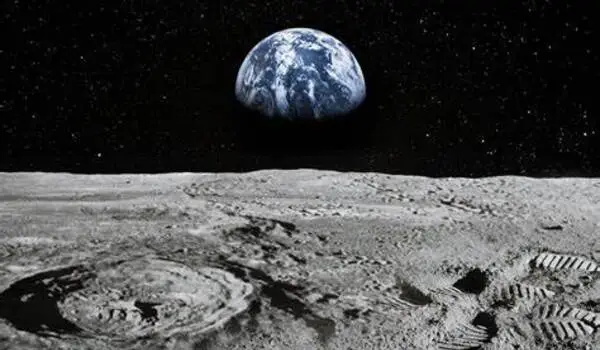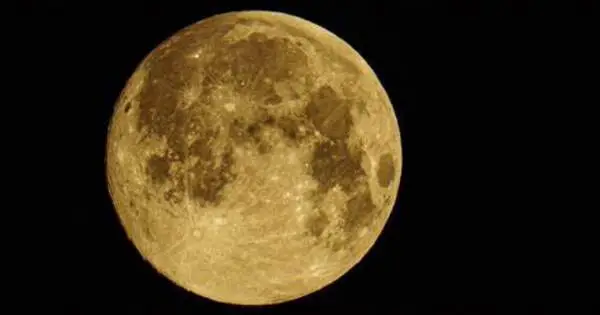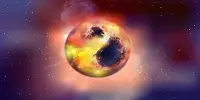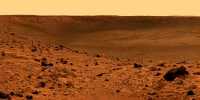For many years, scientists have studied and debated the age of the Moon, which has been believed to be around 4.5 billion years old, roughly the same as the age of the solar system. Researchers reconstructed the age of the Earth’s Moon by studying microscopic lunar crystals collected by Apollo 17 astronauts in 1972. Although prior estimates put the Moon’s age at 4.425 billion years, a new study found it to be 4.46 billion years old, or 40 million years older than previously assumed.
The study, led by academics from the Field Museum and the University of Glasgow, was made feasible by Northwestern University’s atom-probe tomography facility, which “nailed down” the age of the sample’s oldest crystal. Researchers were able to piece together the timeframe of the Moon’s formation by exposing the age of these telltale zircon crystals, which were discovered hidden within dust gathered from the Moon.
The findings were published in Geochemical Perspectives Letters.
This study is a testament to immense technological progress we have made since 1972 when the last manned Moon mission returned to Earth. These samples were brought to Earth half-a-century ago, but only today do we have the necessary tools to perform microanalysis at the requisite level, including atom-probe tomography.
Dieter Isheim
“This study is a testament to immense technological progress we have made since 1972 when the last manned Moon mission returned to Earth,” said Northwestern’s Dieter Isheim, who co-authored the study. “These samples were brought to Earth half-a-century ago, but only today do we have the necessary tools to perform microanalysis at the requisite level, including atom-probe tomography.”
Researchers were able to count how many atoms in the zircon crystals had suffered radioactive decay using the atom-by-atom approach. When an atom decays, it drops protons and neutrons in order to convert into various elements. For example, uranium decays into lead. Because scientists know how long it takes for this process to occur, they can determine the age of a sample by examining the percentage of uranium and lead atoms.
“Radiometric dating works a little bit like an hourglass,” said Philipp Heck of the Field Museum, the study’s principal author. “In an hourglass, sand flows from one glass bulb to the next, with the accumulation of sand in the lower bulb indicating the passage of time.” Radiometric dating works in the same way, counting the number of parent atoms and the number of daughter atoms that have been changed. Because the transformation rate is known, the passage of time may be computed.”

Isheim is a research associate professor of materials science and engineering at Northwestern’s McCormick School of Engineering and manager of Northwestern’s Center for Atom-Probe Tomography (NUCAPT). David Seidman, the Walter P. Murphy Professor Emeritus of Materials Science and Engineering at McCormick and founding director of NUCAPT, also co-authored the study. Heck is the Field Museum’s Robert A. Pritzker Curator for Meteorites and Polar Studies, senior director of the Negaunee Interactive Research Center and professor at the University of Chicago. Jennika Greer, a research associate professor at the University of Glasgow, is the study’s lead author. When the research began, she was a Ph.D. candidate in Heck’s laboratory.
A massive Mars-sized asteroid collided with the Earth more than 4 billion years ago, when the solar system was still young and the Earth was still expanding. The Moon was formed when a massive chunk of Earth broke away, and the energy of the collision melted the rock that eventually became the Moon’s surface.
“When the surface was molten like that, zircon crystals couldn’t form and survive,” Heck told me. “This means that any crystals on the Moon’s surface must have formed after the lunar magma ocean cooled. They would have melted otherwise, and their chemical traces would have been lost.”
Because the crystals had to develop after the lava ocean cooled, establishing the age of the zircon crystals would disclose the Moon’s earliest conceivable age. However, in order to determine the greatest probable age of the Moon, researchers used Northwestern’s atom-probe tomography tools.
“In atom-probe tomography, we start by sharpening a piece of the lunar sample into a very sharp tip, using a focused ion beam microscope, almost like a very fancy pencil sharpener,” Greer went on to explain. “We then use UV lasers to evaporate atoms from the tip’s surface.” The atoms pass through a mass spectrometer, and the speed at which they move tells us how heavy they are, which tells us what they’re comprised of.”
The researchers concluded that the oldest crystals are around 4.46 billion years old after analyzing the components in the sample and doing radiometric dating. That implies that the Moon is at least that ancient.
Heck believes that knowing when the Moon formed is critical because “the Moon is an important partner in our planetary system.” It keeps the Earth’s spinning axis stable. It’s why there are 24 hours in a day. It is the cause of tides. Life on Earth would be very different if the Moon did not exist. It’s an element of our natural system that we want to better understand, and our research is a small piece of the whole.”















